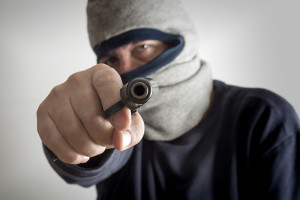 The harsh realities of active shooter situations in elementary schools, movie theaters and office buildings across the county have become all too familiar in recent years. And while mass casualties are the goal of those firing the guns, law enforcement and medical personnel at Parkland Health & Hospital System say there are ways individuals can protect themselves and others when placed in the deadly crossfire.
The harsh realities of active shooter situations in elementary schools, movie theaters and office buildings across the county have become all too familiar in recent years. And while mass casualties are the goal of those firing the guns, law enforcement and medical personnel at Parkland Health & Hospital System say there are ways individuals can protect themselves and others when placed in the deadly crossfire.
“Unfortunately, we don’t know when violence will occur. We’ve seen reports from shopping malls, university campuses and even healthcare clinics,” said Dan Birbeck, a captain with the Dallas County Hospital District Police. “But even though we don’t know the ‘when,’ anyone can be prepared to take action.”
Capt. Birbeck, who has trained staff at numerous healthcare operations nationwide on active shooter response and planning, said action can come in many forms and noted that if an individual is caught in an active shooter situation they should never underestimate the threat.
“If you hear sounds and your first thought is ‘that’s gunshots,’ don’t try to convince yourself that it may be something else like fireworks, because how you react could mean the difference between life and death,” Capt. Birbeck said. “Remember, police are minutes away when seconds count.”
Individuals can increase their chances of survival by remembering a simple acronym ADD – avoid, deny, defend. Avoid where the shooting is taking place – get out of the building or find a safe area to shelter in place until police arrive. Deny the shooter access to the area by barricading the area with multiple layers such as locking a door and moving heavy objects such as desks or file cabinets to further block access and defend yourself and others against the shooter. But, cautions Capt. Birbeck, if there is no opportunity to avoid or deny access an individual must remember they are going up against someone whose ultimate goal is a mass homicide.
“You must have the mindset that you will truly be in a fight for your life,” he said.
Alexander L. Eastman, MD, MPH, Medical Director and Chief of the Rees-Jones Trauma Center at Parkland and Assistant Professor of Surgery at The University of Texas Southwestern Medical Center, is highly qualified to talk about the trauma associated with gunshot wounds, but as a Lieutenant on the Dallas Police Department’s Special Weapons and Tactics (SWAT) squad, Dr. Eastman also knows first-hand how to respond effectively during an active shooter situation. In addition, Dr. Eastman is a nationally-recognized expert on this topic having written policy for the U.S. Department of Justice and the Hartford Consensus on survivability during a mass casualty shooting event.
The Hartford Consensus recommends that an integrated active shooter response include the critical actions contained in the acronym THREAT:
- Threat suppression
- Hemorrhage control
- Rapid Extrication to safety
- Assessment by medical providers
- Transport to definitive care
“As we’ve looked back over active shooter situations in Fort Hood, Aurora, Tucson and others we’ve found that life-threatening bleeding from extremity wounds is best controlled by first responders through the use of tourniquets,” said Dr. Eastman. “First responders are first and foremost trained on how to respond in an active shooter situation, but they are also trained in emergency medical care such as the application of tourniquets.”
Dr. Eastman also emphasized that no matter how rapid the arrival of professional emergency responders, bystanders will always be first on the scene. A person who is bleeding can die from blood loss within five minutes, therefore it is important to quickly stop the blood loss. A national campaign with Texas ties, “
Stop the Bleed,” empowers individuals to act quickly and save lives.
Still, the key to surviving an active shooter situation is to have a plan, say Dr. Eastman and Capt. Birbeck.
“When you go into an office building, shopping mall or restaurant, look around and size up your surroundings. Know where the exits are and plan in your mind what you’d do in the event of an active shooter situation,” Capt. Birbeck said. “Don’t be paranoid, but work ‘ADD’ into your plan. It could mean the difference between life and death.”
 The harsh realities of active shooter situations in elementary schools, movie theaters and office buildings across the county have become all too familiar in recent years. And while mass casualties are the goal of those firing the guns, law enforcement and medical personnel at Parkland Health & Hospital System say there are ways individuals can protect themselves and others when placed in the deadly crossfire.
The harsh realities of active shooter situations in elementary schools, movie theaters and office buildings across the county have become all too familiar in recent years. And while mass casualties are the goal of those firing the guns, law enforcement and medical personnel at Parkland Health & Hospital System say there are ways individuals can protect themselves and others when placed in the deadly crossfire.







